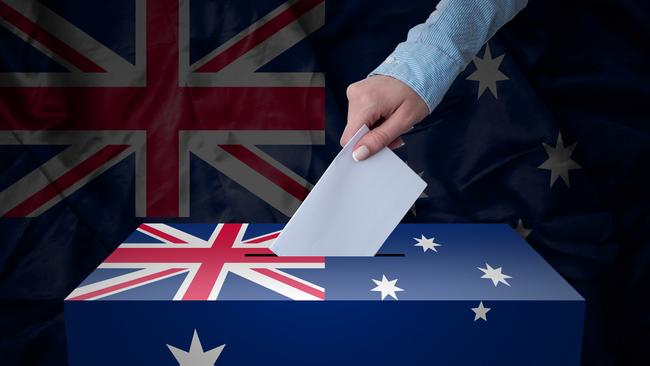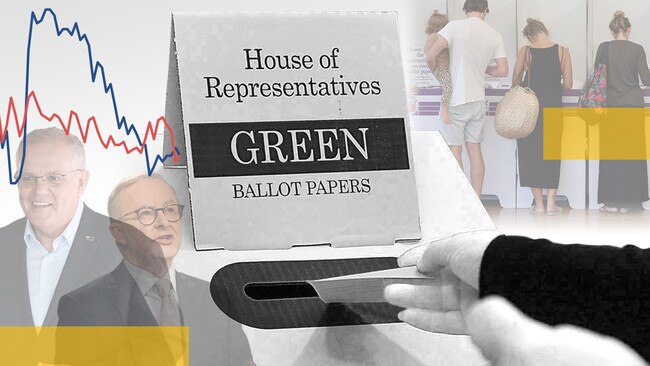MRP: a new way of polling

As well as broader factors, there are contests in 151 electorates, with different candidates in each seat competing for a place in parliament. These seats have varying characteristics and do not always move in identical ways during an election campaign.
In this election, there is a lot of discussion about the possible success of well-financed, highly-organised independents and minor parties like the Greens, Clive Palmer’s United Australia Party, and Pauline Hanson’s One Nation. The reality is that even if these candidates and parties win a lot of votes at the national level, there will not be a hung parliament unless they can obtain enough votes in the right places, so that these votes are converted into seats won.
Traditionally, media outlets have commissioned polls in individual seats to address these concerns. One problem with this approach is that seat polls are frequently based on small samples obtained through automated telephone calls.
Commonly called ‘robopolling’, this method has become unreliable because the samples obtained are skewed towards older demographics with landlines, and those who are very interested in politics. If you live in a marginal seat, you will be aware of lobby groups and some political parties spamming the electorate during campaigns. This has led to people simply refusing to answer their phone, meaning participation rates have fallen even further. The result of all this is that such seat polls are not always accurate.
Fortunately, YouGov has pioneered a solution, which is called MRP.
What is MRP?
MRP stands for multi-level regression with post-stratification. It’s a statistical technique used to predict results for individual electorates, by combining a large survey – at least ten times as big as a typical national survey – with electorate-level information (such as population density and the proportion of the population with a university degree) from the Census and other government agencies, and previous election results.
Using the different features of electorates along with survey responses, we are able to pool the information we have across seats, producing more accurate estimates with a smaller sample.

How do we know it works?
YouGov is a global company that was founded in the UK, and has pioneered the use of MRP techniques there to successfully predict election outcomes more accurately than other pollsters. YouGov’s MRP model correctly predicted the hung parliament that occurred at the 2017 UK general election. It did so by tipping unexpected results in seats like Kensington and Canterbury which traditional polls were not able to do. In the 2019 election, the model indicated the result, including once-in-a-generation Conservative wins in traditional Labor strongholds.
What are the nuts and bolts?
For our model estimating the outcome of the 2022 election, YouGov collected 18,923 surveys with Australian voters from 14 April to 7 May. This includes some data from recent Newspoll surveys as well as additional surveys collected separately. This provides us with a very large sample to produce granular estimates of vote intention in all 151 of the electorates that will decide the election.
In these surveys, respondents were asked their voting intention in the same way Newspoll does. Participants see the options that they will have to choose from in their own electorate, including all parties and independents. They are also asked a large number of questions about their demographic and other characteristics, as well as how they have voted previously.
The data from the survey - age, gender, education, language spoken at home, religion, dwelling tenure, household income, employment and 2019 vote - along with other information are used both as predictors in our model, and to weight our predictions.
The model itself is a logistic regression. We combine the estimates from this with data collected from the Census and other sources to produce predictions based on the known values of the features in our model for every electorate.

An MRP is not a crystal ball
All polling – including this MRP – is not a prediction about the future but a measurement at the time it is taken. Like all estimates of public opinion, there are uncertainties. There will be electorates that behave in unexpected ways. There are a few seats – like Lingiari in the Northern Territory – that are incredibly difficult to poll by any method. There may be last minute shifts in vote intention due to campaigning between now and Election Day.
All that said, this methodology is well-tested, scientific and provides a more robust answer to the question of how national vote figures translate to number of seats the parties will win than anything commissioned by any media outlet in Australian political history. These estimates provide ordinary Australians with more information about what is happening in the election than they would normally have.

Dr Campbell White is the Head of Polling at YouGov Asia-Pacific. Dr Shaun Ratcliff is a lecturer of data science at the University of Sydney
EXCLUSIVE: YouGov results for all 151 lower house seats — the most comprehensive poll ever conducted in Australia — in The Australian online tonight.







National polling is important and valuable, but it doesn’t tell the whole story. In our electoral system, the winner is not necessarily the party with the most votes, but the one that wins the most seats in parliament. While in most cases the party that wins the national two-party preferred vote usually forms government, this hasn’t always been the case in Australian history.